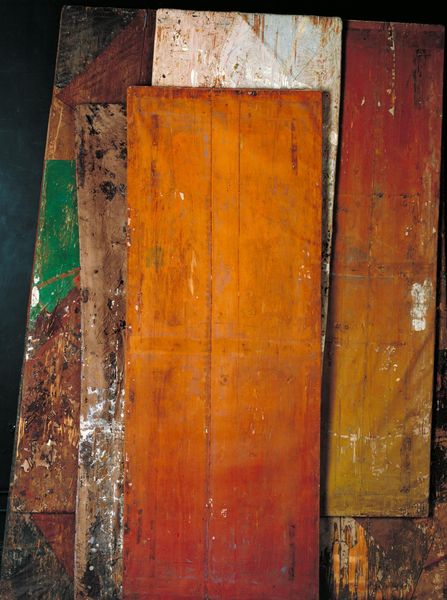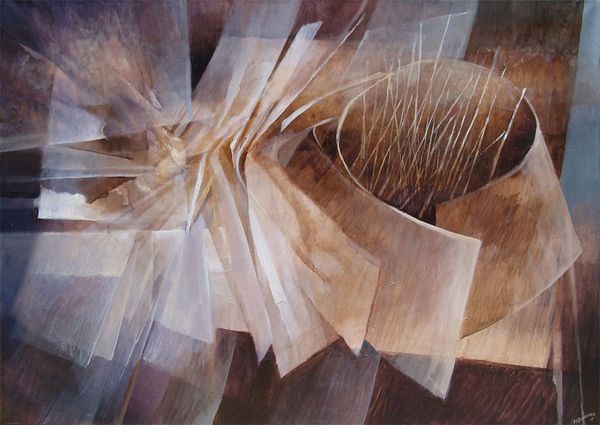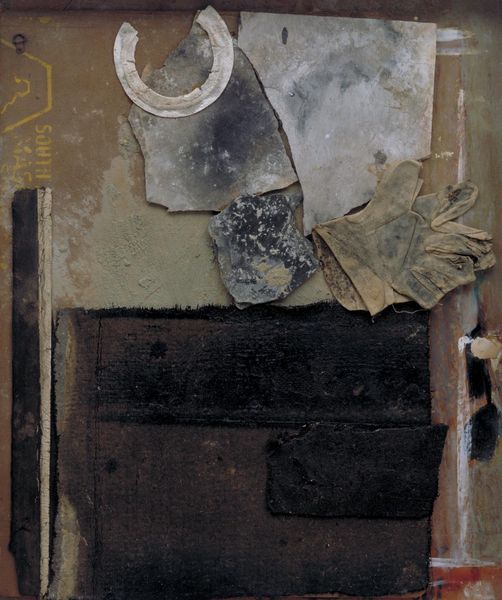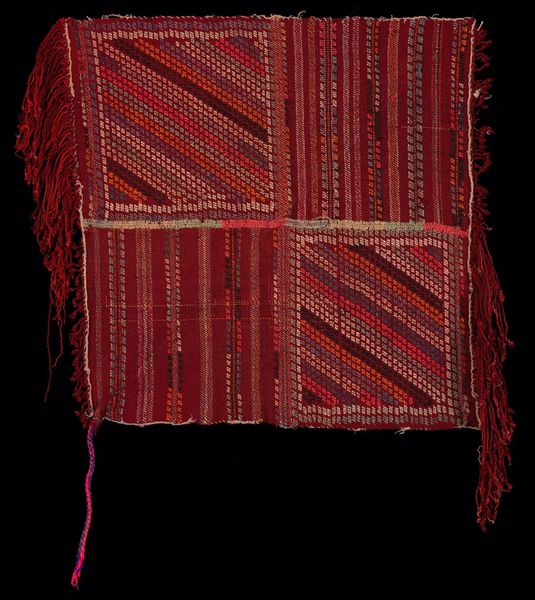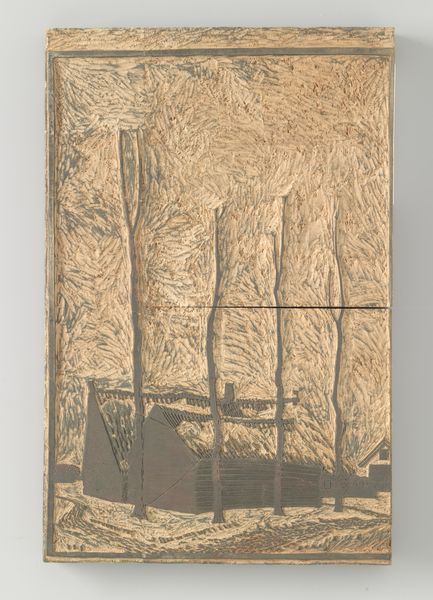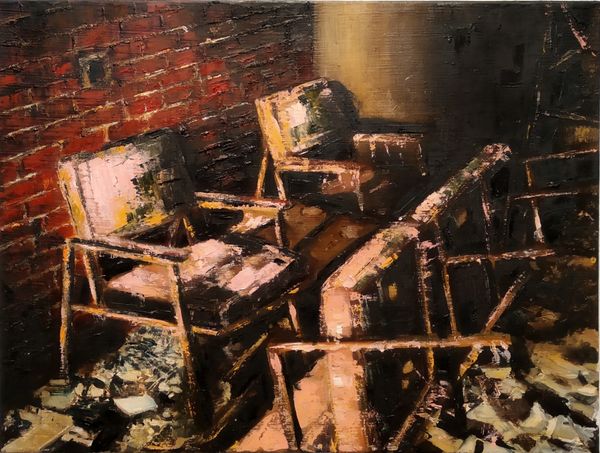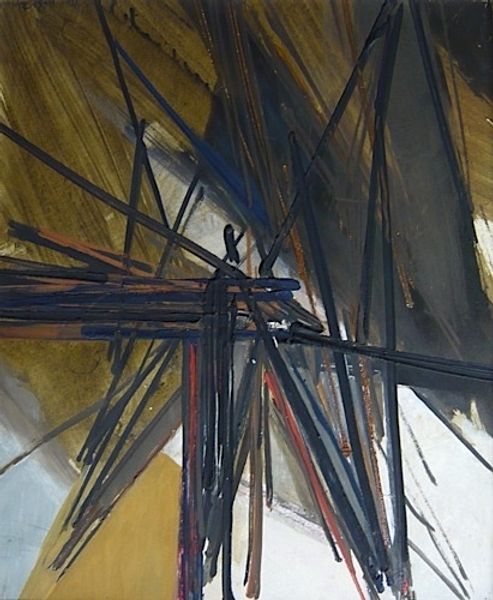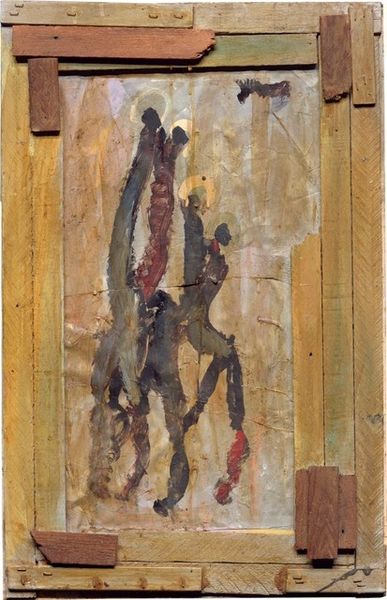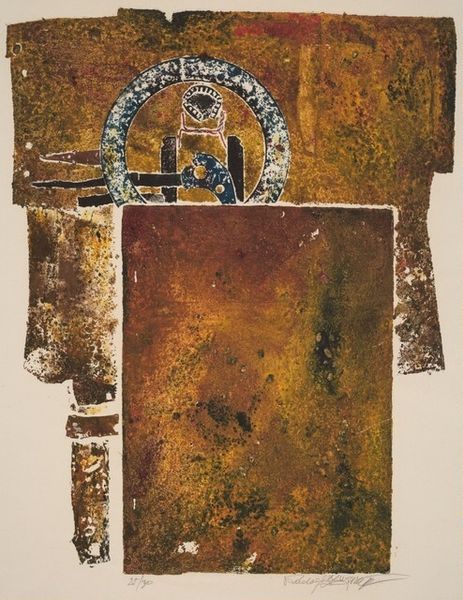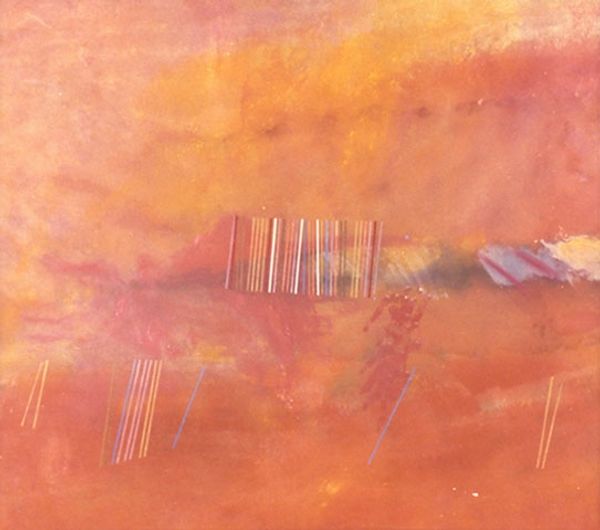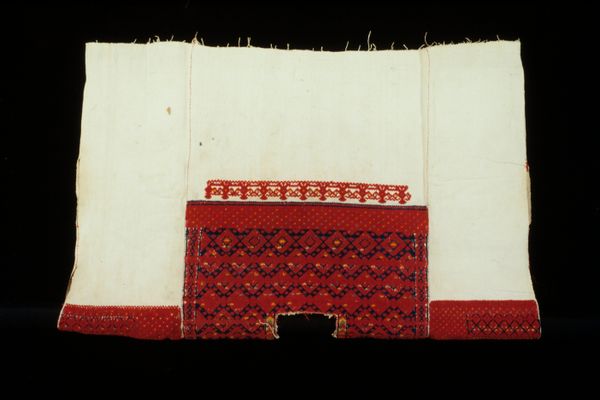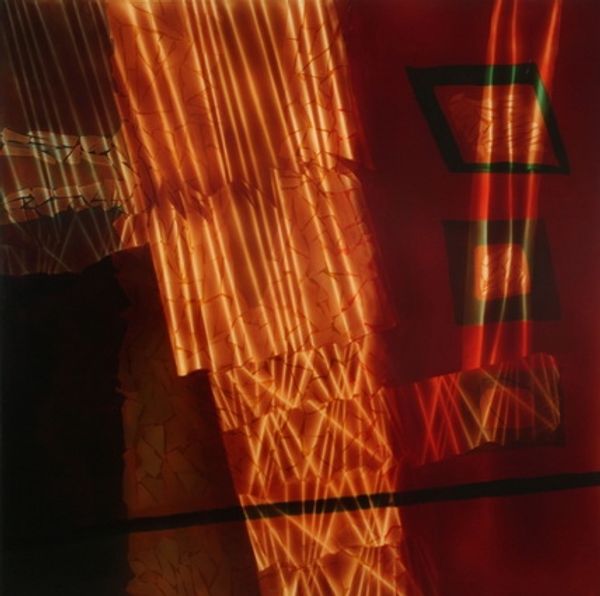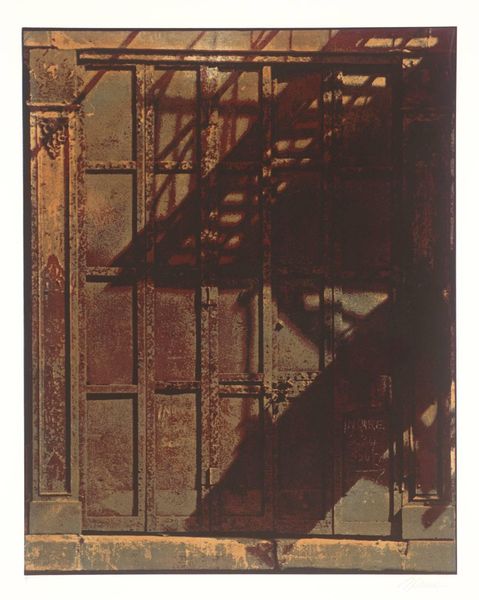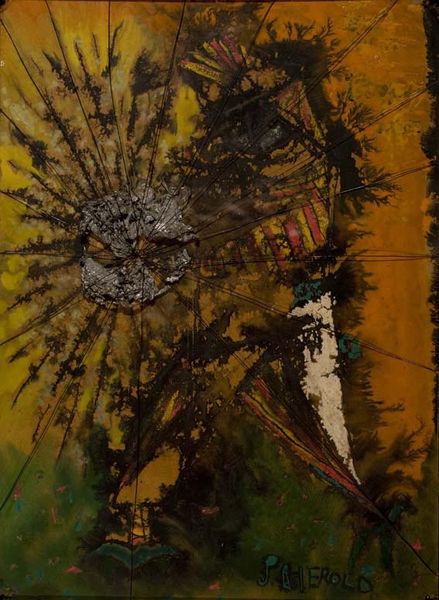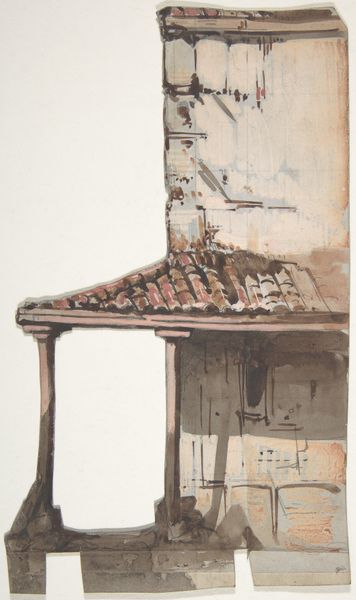
Dimensions: support: 1127 x 1750 mm
Copyright: © Estate of Edward Middleditch, courtesy James Hyman Gallery, London | CC-BY-NC-ND 4.0 DEED, Photo: Tate
Curator: Edward Middleditch’s “Flowers, Chairs and Bedsprings” presents a somewhat chaotic still life. My first impression is one of rustic decay. Editor: Indeed. Note how the artist uses a limited palette, primarily earth tones, to construct a dense and layered composition. The textures are almost palpable. Curator: I'm drawn to how the mundane, mass-produced bedsprings contrast with the natural, albeit decaying, floral arrangement. It speaks to the interaction between the domestic sphere and the external world. Editor: The chair, positioned centrally, acts as a structural support, both literally and metaphorically, for the transient beauty of the flowers. Curator: Ultimately, Middleditch's arrangement invites us to contemplate the cyclical nature of life and the beauty inherent in the process of decay. Editor: I find the painting offers a meditation on the interplay of natural and manufactured forms, prompting reflection on our relationship with both.
Comments
tate 7 months ago
⋮
http://www.tate.org.uk/art/artworks/middleditch-flowers-chairs-and-bedsprings-t06460
Join the conversation
Join millions of artists and users on Artera today and experience the ultimate creative platform.
tate 7 months ago
⋮
In the 1950s Middleditch belonged to group of artists known as the Kitchen Sink School because of their fondness for presenting ordinary, domestic interiors as potentially important. Their direct and vigorous portrayal of reality related to their experience of the optimism and the economic hardship of Britain after the Second World War. In this picture of flowers set against a bed in the form of a cross, he combines the lyrical and the mundane, with rich autumnal hues. The painting comes from the collection of JB Priestley. It has historic interest, as it was exhibited in the British Pavilion at the 1956 Venice Biennale in order to present contemporary British art to an international audience. Gallery label, September 2004
